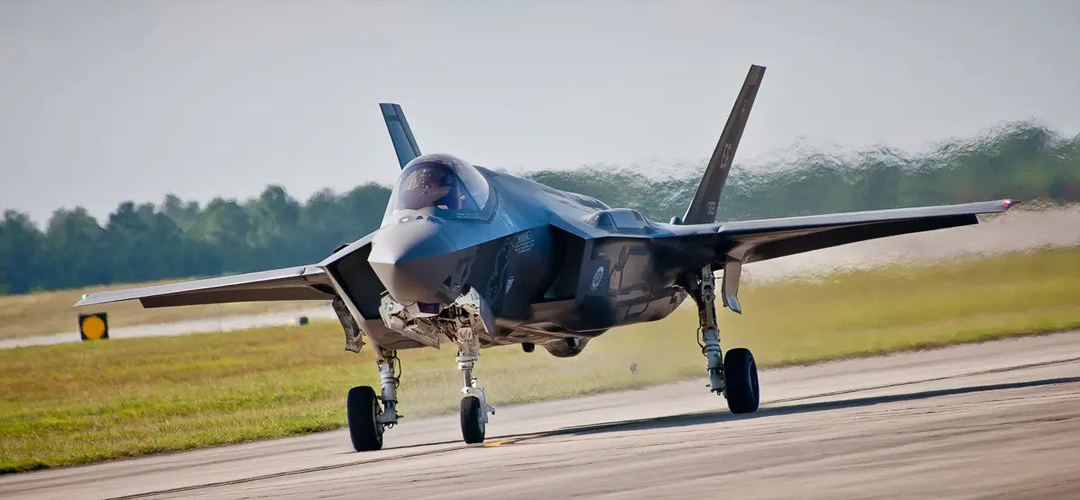An Indian 5th Generation Fighter?
February 18, 2023 | Expert Insights

During the Aero India 2023, a model of the Indian Advanced Medium Combat Aircraft (AMCA) was displayed. Also, plans were unveiled for HLFT-42, a new-generation fighter trainer to prepare fighter pilots comprehensively for the fifth-generation aircraft.
The success of the LCA has evidently enthused DRDO to push ahead aggressively in designing the new fighter. The feasibility study commenced in 2009 with a financial allocation of over Rs 500 crore to date. As per DRDO, the project is at the final stage of approval by the Cabinet Committee on Security. Reportedly, the AMCA would be a 25-ton twin-engine stealth aircraft.
Going by the DRDO track record with an inordinately long gestation period for any weapons system, the cynics are asking whether the AMCA will reach squadron service in a time span that will make it an effective investment or should India look at faster options.
Background
In broad terms, 'Fifth Generation' is a term currently used to describe military aircraft of the next generation. The specific definition to distinguish a Fifth-Generation fighter does not exist as different designers loosely use the term to project their designs currently on the boards or under trial. The only operational Fifth Generation fighters to have been introduced in squadron service are the U.S. F-22 and F-35. However, China and Russia claim to have completed their designs.
For many years, there was a great deal of speculation on the India and Russia's proposed joint development of the fifth generation Sukhoi fighter jet. This followed the successful collaboration between India and Russia in manufacturing the Brahmos supersonic cruise missile. However, this project was constantly bogged down by a long period of stasis. In 2012 there was a two-year delay. An important contract was not finalized, and Russia itself reduced its delivery orders for these aircraft. Russian contractors were also non-cooperative. So, India finally had to leave this project in 2018.

Analysis
The push in the defence sector is heavily towards 'Atmanirbhar', which makes it unlikely that India will go for a joint development/ production with another country or buy one off the shelf. However, long and torturous may be the path to a home-grown 5th Gen fighter; currently, it appears as the only choice to equip the IAF in the next couple of decades. In the interim, the Rafale, an upgraded Su 30 MKI and LCA Mark II may fill the gap.
The confidence of DRDO and the defence manufacturing sector is on the rise after many notable successes that they have notched up- the LCA, INS Vikrant and the indigenously built nuclear submarines, to list a few. That notwithstanding, considering that India is still some distance from designing a successful modern jet engine and has to outsource most of the sensors on board a modern jet fighter, India still has a long way to go to acquire complete self-sufficiency in its defence sector. A notable example is the multi-mode radar for the Tejas, which was being developed domestically. However, contrary to hopes, this process did not go down as efficiently as expected, and there were some serious setbacks. The net impact was a long-term delay in the entire project.
While the F-35 display during Aero India 2023 was the event's highlight, it does not automatically signal the U.S. willingness to sell the aircraft to India or India's desire to go for such an expensive and technologically complex piece of equipment during the ongoing economic stresses. The U.S. government made this amply clear in its statement, which said that the presence of the F-35 in the air show was not because there was any imminent deal on the purchase of this equipment by India. Rather this was a continuing sign of the closeness of the Indo-U.S. strategic partnership.
The basic problem with the Indian defence sector is structural. Unlike in the West, where defence research programs are given a lot of leeway to operate as long as they meet their allotted targets, such institutional freedom is lacking in India. Over and above this, there are the traditional bureaucratic hurdles, red tape and overall lethargy in sticking to timelines. Investment in human resources to build up the brainpower in the defence research sector is also inadequate. India is still lagging behind the world in important technologies like jet engines, stealth and radar.
On a positive note, the Indian government has tried to address these challenges for the ongoing projects. It has made an open declaration asking the private sector in the country to play a significant part in this endeavour. It is believed that this will have a significant add-on effect as the private sector in India has never been a major player in the country's defence sector.
India has no equivalent of large private defence contractors in the West like Lockheed Martin. It will take years to develop the institutional culture, resulting in a synergistic working environment between the public and private sectors in defence production in India. The good news is that, at long last, a beginning has been made.
India is playing catch up to its contemporaries in the defence production sector. So, it is a tall order to change everything in a single go. Rather what is required is a step-by-step approach. All the lacunae described earlier are not insurmountable, and each has to be addressed separately. Taking silo-based decisions is not going to help anybody. It is only going to push India back in its defence production capabilities.
In the meantime, the Indian defence establishment should not overlook what it already has at hand. The fourth-generation aircraft India currently has at its disposal can be upgraded with the available level of technological competence that the DRDO has. Additional costs incurred in money and time will be low here, while the benefits will be worthwhile. India is situated in a dangerous neighbourhood. So, if it can produce a fifth-generation fighter jet on its own, it will have a huge advantage over its regional rivals. But at the same time, it should not let other options off the table.
Assessment
- While the aims of this project are worthwhile, the means to achieve those aims are also important. Large-scale structural reforms are needed in the Indian defence sector.
- Lessons have to be learnt from mistakes made in defence production in the past. Expectations of complete defence sovereignty must be matched with the reality on the ground.








Comments